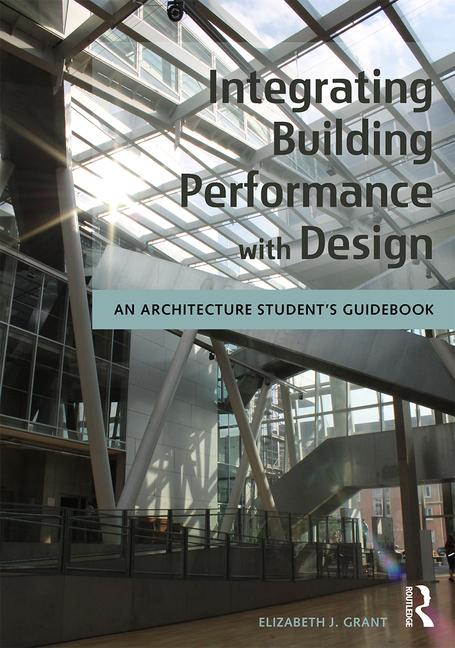Center Combines Visual Appeal with State-of-the-Art Equipment
Beauty by the Bay






Northwest Michigan is one of the most popular tourist destinations for travelers. The visual rapture of the Great Lakes, along with activities, restaurants and events, makes the region a favorite for vacationers almost any time of year.
The community is also a well-known regional hub for arts and culture. The area is home to thousands of artists, musicians, writers, actors and other creative minds. There are more than 100 arts and cultural organizations in the 10-county region. In 2018, the vibrant arts community welcomed a new venue that will serve as the core for today’s performers and patrons as well as for succeeding generations.
The Great Lakes Center for the Arts, a $25 million, 525-seat theater, opened in Petoskey, just steps from picturesque Little Traverse Bay. The 40,000-square-foot center features state-of-the-art equipment and acoustics, and was designed in harmony with the beauty of the surrounding community,
Roots for the facility date back 20 years, when a Community Cultural Plan for Emmet and Charlevoix Counties prioritized development of additional cultural facilities and envisioned the addition of unique performing arts center for the region. In July of 2018, after a nine-month design process and 16 months of construction work, the Detroit Symphony Orchestra struck the first notes in the facility.
“Our team was challenged with the idea of creating a high-aesthetic center for the performing arts that met world-class levels for finish and quality of acoustics for all types of performances,’’ said Jason Novotny, the lead architect on the project for TowerPinkster, the firm responsible for the design of the building. “They wanted spaces that were uniquely Northern Michigan in their feel, and approachable as a community amenity.”
“The vision of the Center is to serve as a social and cultural hub for Northern Michigan, to serve as a leading education provider and, over time, to become a nationally-recognized institution for unique cultural performances and events,’’ said Jill O’Neill, the Center’s Executive Director.
Architectural and Construction Challenges
Architecture and construction teams faced several challenges in building the new facility. The owners wanted to include the most up-to-date features to allow patrons to enjoy their experience. to include elements that embrace the region. Teams were limited by a tight footprint and the sometimes challenging weather in Northern Michigan, where any construction work completed in frigid winter is considered a bonus.
“The Center had to book acts a year in advance,” said Ken Lawless, a former construction executive who served as the liaison between the building owners, architect, and construction manager. “There was no room for failure. It was a team effort to build it on time.”
Novotny said the architectural team went to great lengths to develop a theme for the space that was highly influenced by local colors and textures. “We included aged copper, Petoskey stone, natural sedimentary rock, and of course, the beautiful blue waters of Lake Michigan,’’ Novotny said.
“The color palette and design features intentionally reflect the beauty of Northern Michigan, with blues, sands, grays, copper and patterns and textures that evoke the water of Lake Michigan, which is just steps away from the Center,’’ O’Neill added.
There is also a curvilinear wood ceiling which resembles waves and echoes the flow of the lake. There is also a large rooftop terrace with stunning views of Lake Michigan.
Attention to Technical and Aesthetic Detail
Technically and aesthetically, the Center is a masterpiece that will accommodate audiences for classical music, ballet, intellectual dialogue, comedy, country, jazz, cinema, and more. The building includes digital sound technology that is found in only a few theaters across the country, and a 45-foot cinema screen with powerful theatrical surround sound for cinema and presentations.
O’Neill said the challenge for the theater designers, Fisher Dachs Associates, and the TowerPinkster team was creating a facility that first and foremost enhanced the experience for patrons. That mindset drove every architectural consideration.
“Design is certainly a fluid, creative process,’’ she said. “Driving each decision was the 1999 Cultural Plan, with the goal to develop a performing space that is technically suitable for artists and both welcoming and comfortable for patrons. Throughout the value engineering phase, the determining factor was to ensure a high-caliber artistic and patron experience, and that was never compromised.”
One of the important technical components of the Center is also a critical safety feature. The building includes five acoustical smoke vents manufactured by The BILCO Company. Automatic smoke vents protect property and aid firefighters in bringing a fire under control by removing smoke, heat and gases from a burning building. This will allow air quality and visibility to be maintained inside the theater so that patrons can exit safely, and firefighters can enter to do their job. The smoke vents feature both an STC and OITC sound rating to block outside noise to maintain the quality of the sophisticated sound system used at this facility.
“With the potential for more than 500 visitors for larger events, our team knew we would have a need for a dependable smoke ventilation system,’’ Novotny said. “With this being a high-performing acoustical environment, we designed a separate structure for the performance hall from the remainder of the building. This was solely for acoustical isolation of building elements. The BILCO acoustical smoke vents became a part of this ‘shell within a shell’ with their acoustical sound reducing characteristics.”
Squeeze Play
The new center was built near the Village at Bay Harbor, a development that was built in 1994 with 800 units. Bay Harbor includes a downtown area with dining, boutiques, lodging, golfing, and an equestrian center. The development replaced an abandoned cement plant. “There was five miles of Lake Michigan shoreline,’’ developer David Johnson told Crain’s about the origin of construction in Bay Harbor. “The only problem was that it had the largest abandoned cement plant in the world on it.”
Lawless said construction teams had about five acres to build the Center. The main building sits on about an acre, while the rest of the space includes parking areas, sidewalks and pedestrian plaza.
“There was limited room for storage of materials,’’ Lawless said. “We had to have materials shipped on an as-needed basis. Everything had to be precisely scheduled and delivered.”
“It was a very tight site, and we were working into the context of the other buildings which were already in place,’’ Novotny said. “We were also unable to build deep down into the site, since the water table of Lake Michigan was just feet below the new floor elevation.”
Construction officials demonstrated outstanding foresight to take the bite out of the Northern Michigan winter. The Center's theater walls were scheduled for construction in January 2017. Based on the variable weather and potentially high winds coming directly off Lake Michigan, construction teams elected to utilize pre-cast concrete panels in place of traditional masonry block. These 45-foot high panels were erected over four days of calm conditions, giving the team more control over the construction schedule and providing an overall safer construction site.
Regional Impact
Already, the Center’s impact has been felt on the region. Visitors have streamed in to hear an eclectic mix of artists, speakers, and movies. What started out as a vision decades ago has become reality, bringing a community closer together, enriching the lives of everyone in the region, and offering people from outside the area just one more reason to consider Petoskey a vacation destination.
“We have received tremendous feedback from patrons expressing their amazement at the quality of not only the venue, but also the artists,’’ O’Neill said. “They are surprised by the affordability of the tickets, which we can offer thanks to our generous Family of Dreammakers and grant funding. It is a welcoming, world-class venue, and the response has been overwhelmingly positive. As they drive home after one of our shows, we hope that guests will be planning their next trip to Northern Michigan and the Great Lakes Center for the Arts.”
Looking for a reprint of this article?
From high-res PDFs to custom plaques, order your copy today!










